The luxury hotel The Ritz-Carlton, Fukuoka, opened its doors in June in the heart of Fukuoka. Fukuoka’s heritage as the gateway to Japan since ancient times has nurtured civilization that traces back to the roots of this country. The artworks in the hotel follow the concept of two axes: the continent and Fukuoka and tradition and modernity, likening the axes to the warp and weft. The artwork we introduce here is a 10-meter wide three-dimensional ink painting using countless strings. Installed in the Arrival Lobby, it is the first artwork to greet the guests.

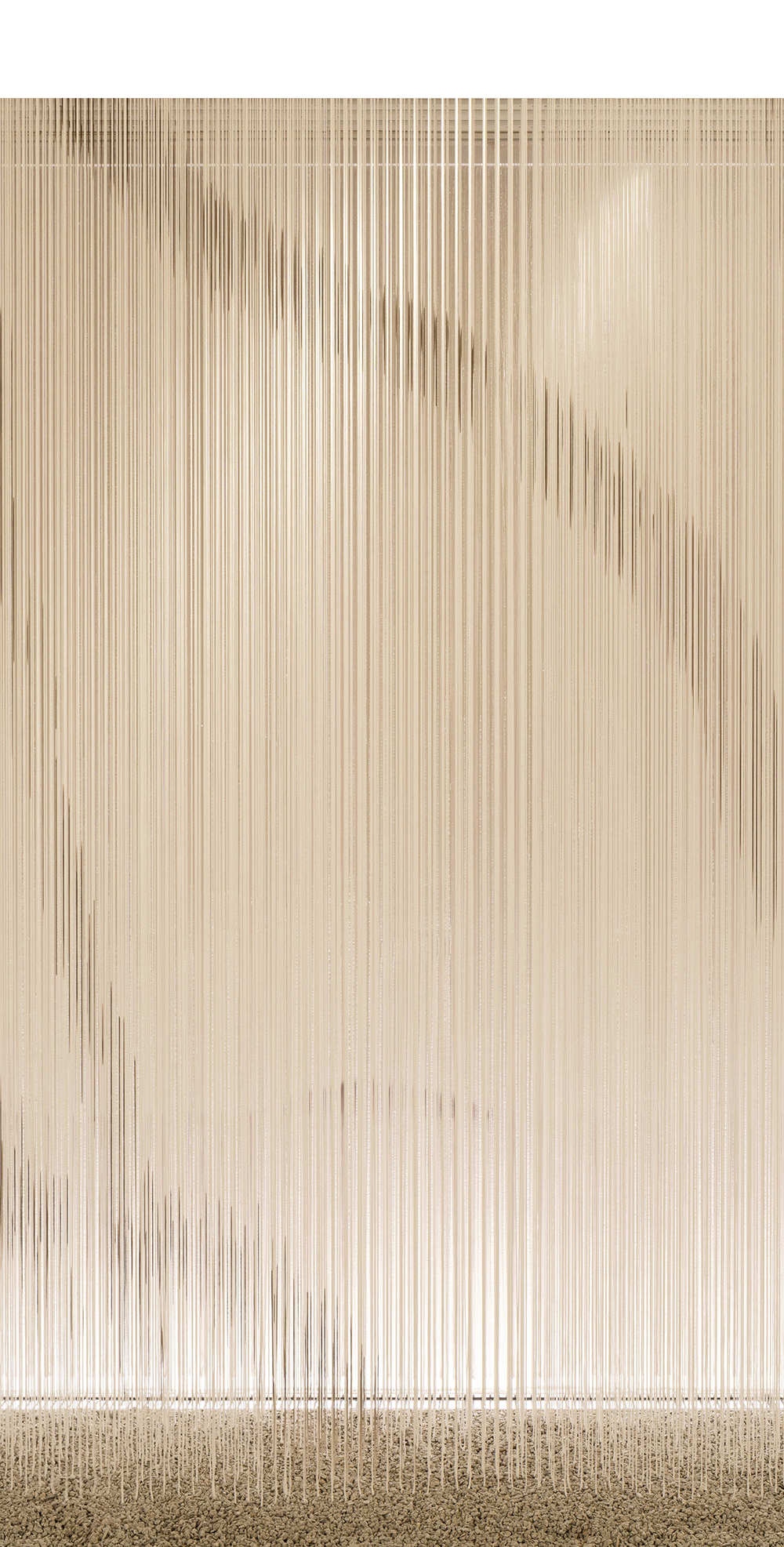
The Artwork

Research and Insights
The Sacred Island of Okinoshima and Associated Sites in the Munakata Region, or “Island of the Gods,” is a World Heritage site in Fukuoka Prefecture. Located between the Japanese archipelago and the Korean Peninsula, the entire island of Okinoshima is an object of worship, and customs such as prohibitions that strictly limit entry to the island still take root among the people. Seeing is believing, so we decided to visit the area.
Naturally, the sanctuary “Okinoshima” is an inaccessible place. The only way to see Okinoshima with the naked eye is to go to Oshima, called “Kami-mamoru-shima.” After visiting the Munakata-taisha Shrine, we took a ferry to Oshima. From the Okitsumiya Shrine’s far-off shrine on Oshima, some 50 km away, “Okinoshima” appeared faintly on the horizon.
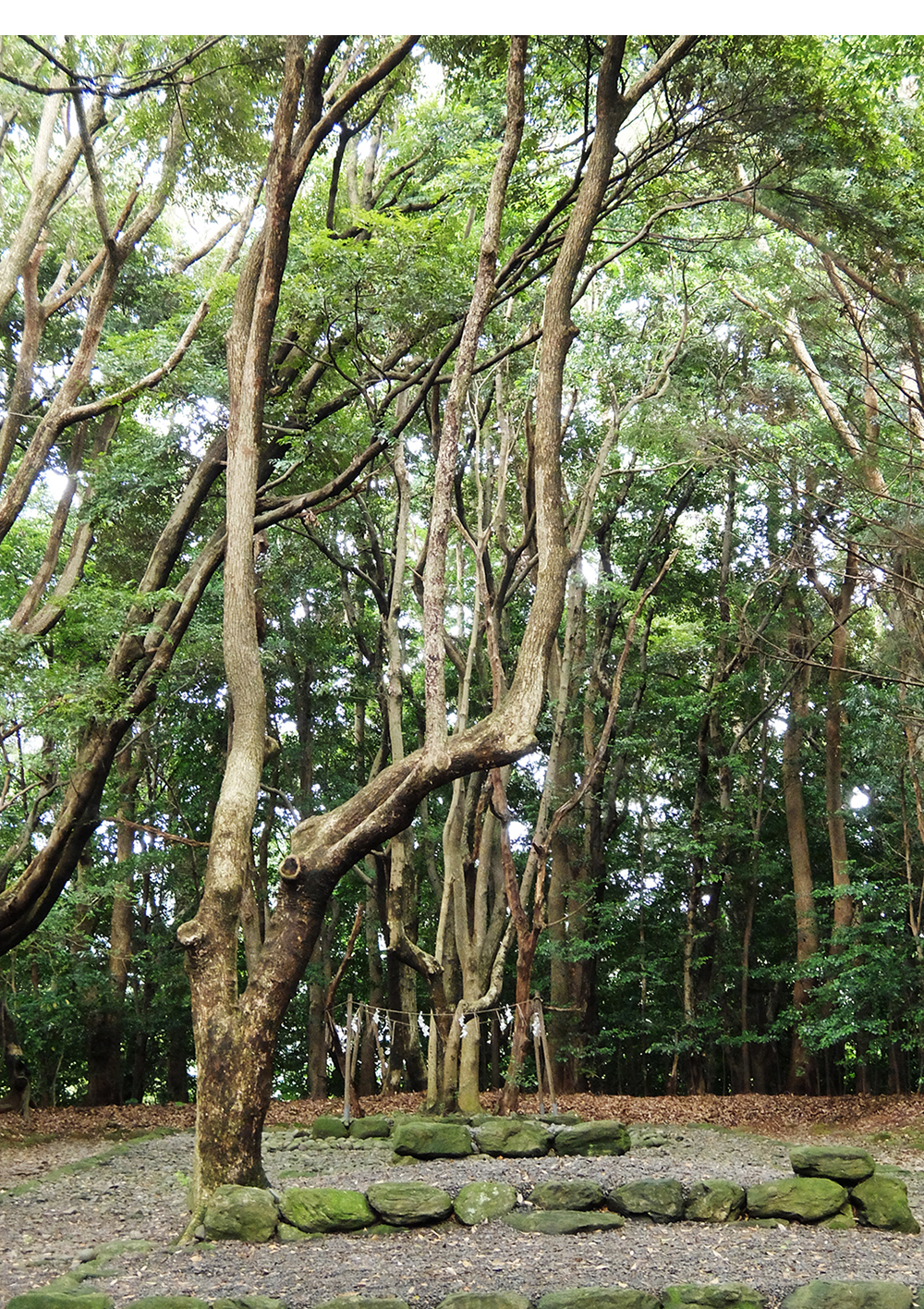
Along with Okinoshima Island, Takamiya Festival Hall, the most sacred place in Munakata Taisha Shrine, is a space of prayer embraced by silence. It is the memory of the beginning of Japanese rituals. Satsukimatsubara, located on the line connecting Takamiya Festival Hall and Okinoshima Island, is a 5-km-long forest of 200-year-old black pine trees along the coast of the Genkai Sea: the original landscape of Japan.
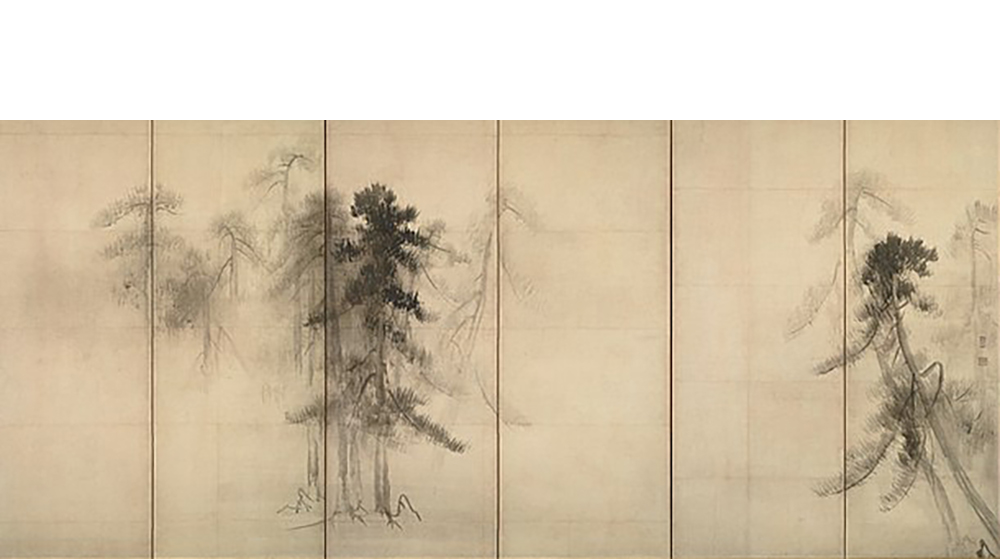
Art Direction
We used The Pine Trees Screen by Hasegawa Tohaku as a reference for the overall design. Although a two-dimensional ink painting, it is one of the best masterpieces in which one can sense the space, depth, and wind. It is considered the root of Japanese aesthetics. Using the motifs of Okinoshima Island, Takamiya Festival Hall, and Satsukimatsubara, essential places that tell the story of Japan’s roots, each landscape overlaps the other in this imaginary scenescape. The initial vague idea of expressing the shades and depth of an ink painting through countless overlapping silk threads gradually became a tangible visual image.

Design Development
The first rough sketch was drawn by the artist who co-created this installation. An artist who explores the world of ink painting through photography, he creates two-dimensional works by photographing the shading and depth of natural phenomena such as snow, fog, and clouds.
With the “Takamiya Festival Hall” at the right and “Okinoshima Island” faintly visible to the left, “Satsuki Matsubara” makes up the entire scenescape. By envisioning the order of the guests’ movements and line of sight, the composition of the installation began taking a well synchronized form.
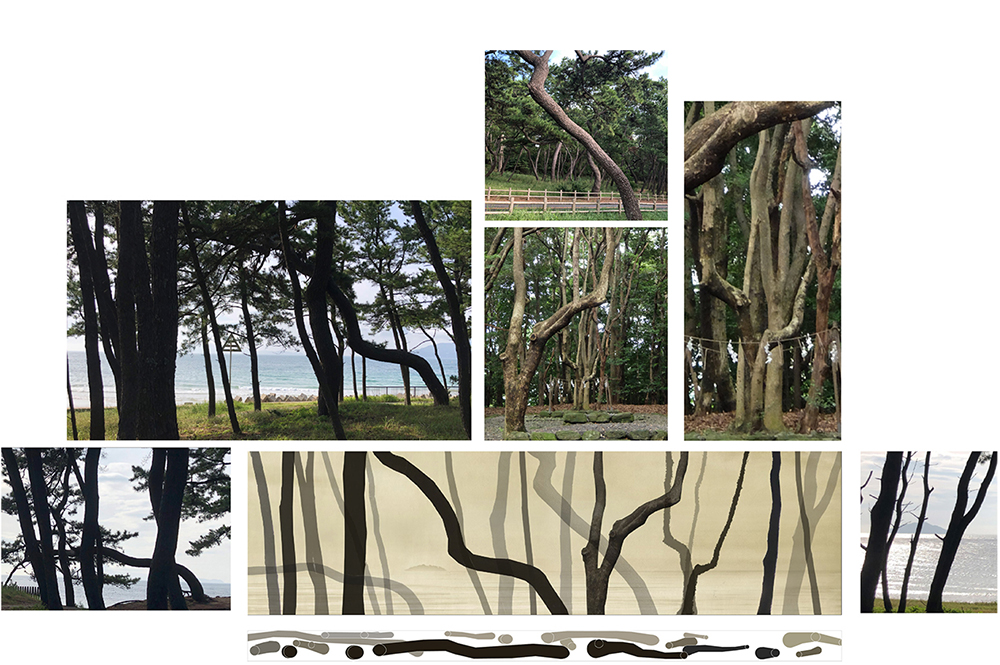
We lined up the photos of the Pine Forest, Takamiya Festival site, and Okinoshima Island taken at the site and carefully balanced them out to create the final composition design.

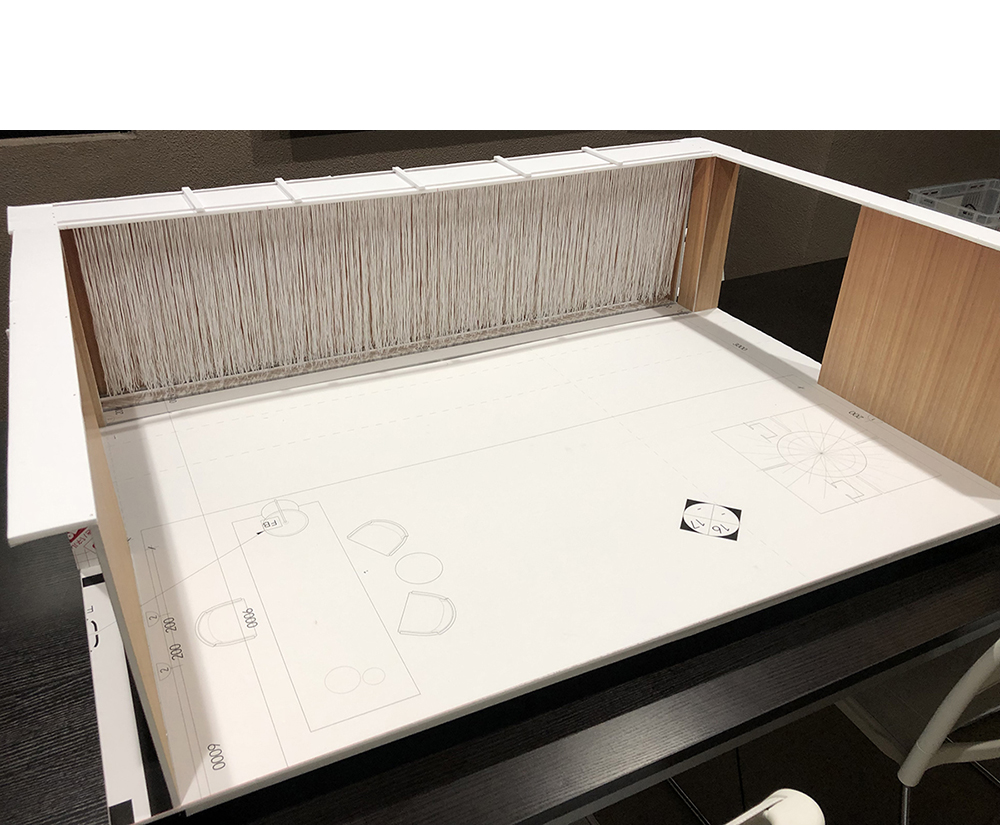
Design Fabrication
Using a 1/10 scale model, we conducted lighting simulations with the interior and lighting designers. We verified the lighting by using random spots from behind and in front of the strings to create the image of sunlight falling into a pine forest and linear upper lighting to create a gradation of light. Lighting design is a crucial factor for a successful installation.
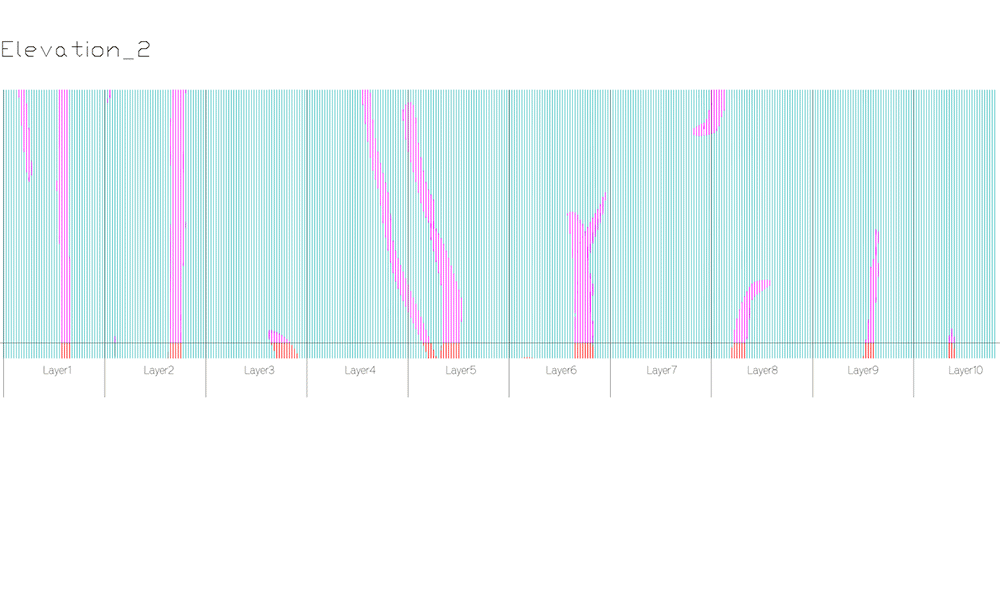
In assembling the three-dimensional ink painting using countless strings, we created 3D data based on a 2D composition design. Three-dimensionalized trees were then converted back to 2D, layer by layer. A total of ten layers of strings will now be ink-dyed down to the smallest detail.

In expressing the three-dimensional ink painting using countless strings, we created 3D data based on a 2D composition design. Three-dimensionalized trees were then converted back to 2D, layer by layer, creating ten layers to occupy the installation area. This method allowed us to specify the ink-dyeing portions of the string to the smallest detail.
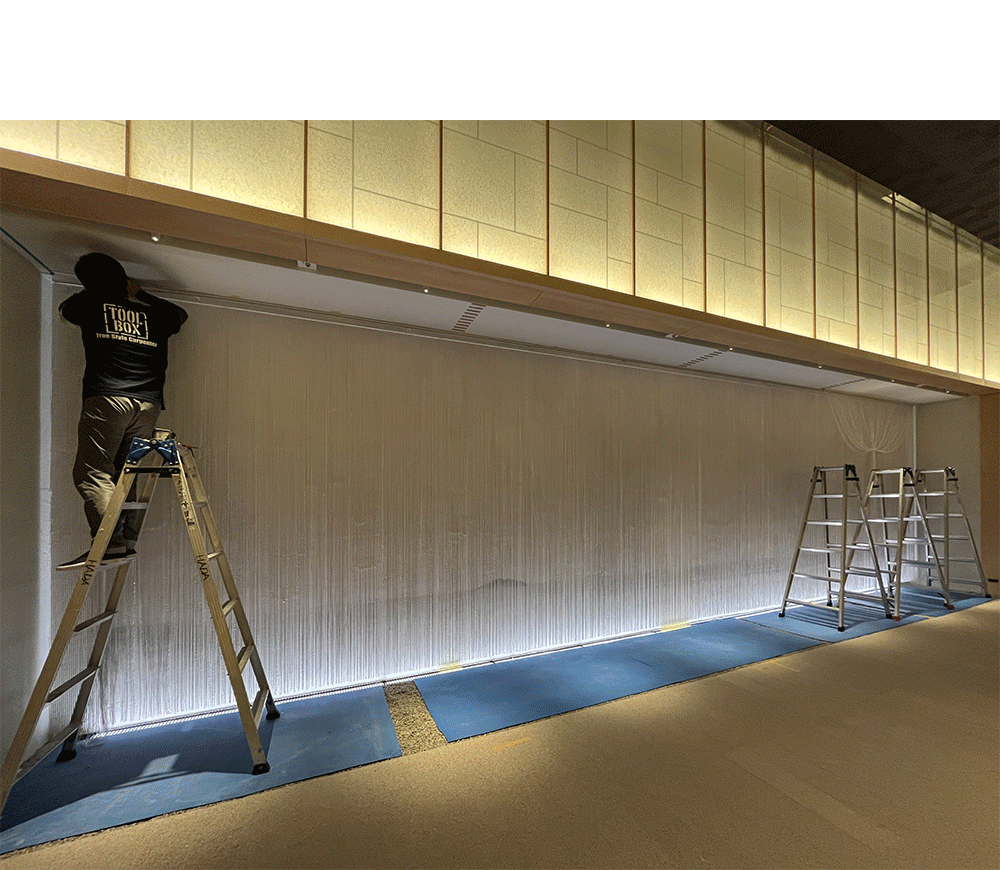
Setting & Installation
Finally, it was time to install the strings. At first, we thought of using a customized perforated board to be installed on the ceiling but opted for layer-by-layer aluminum channels to meet the fire safety requirements. Only the innermost layer uses string curtains to depict a faint view of Okinoshima Island.

Epilogue
The countless layers of silk threads have a enigmatic, mysterious beauty beyond description, and even pictures and videos cannot do it justice. Seeing is believing: we highly recommend you visit it in person.
Projects > The Ritz-Carlton, Fukuoka